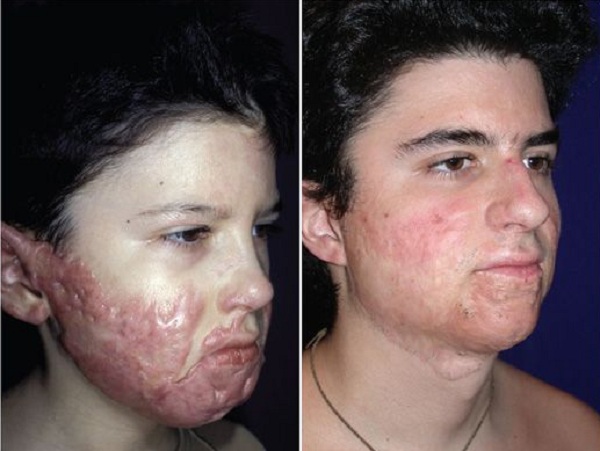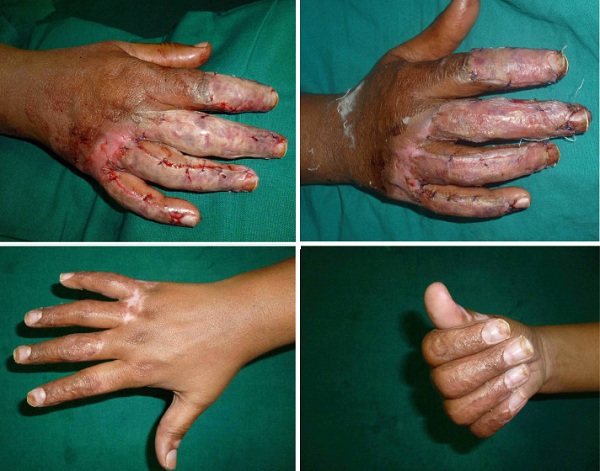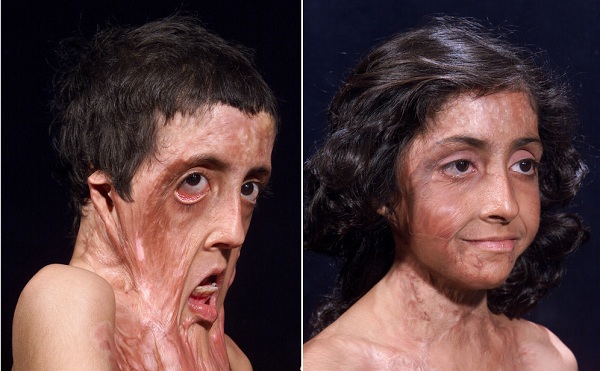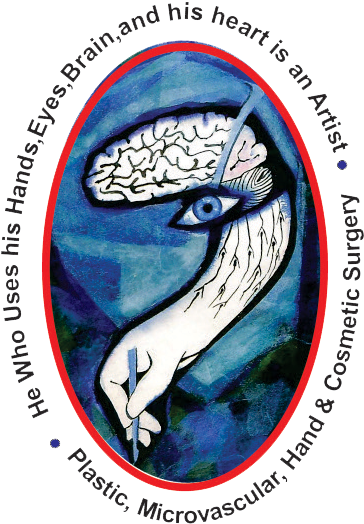Burns Treatment
If you have a severe wound, such as a burn that has limited your mobility, causes a loss of sensation, or is cosmetically unappealing, plastic surgery may be an option.
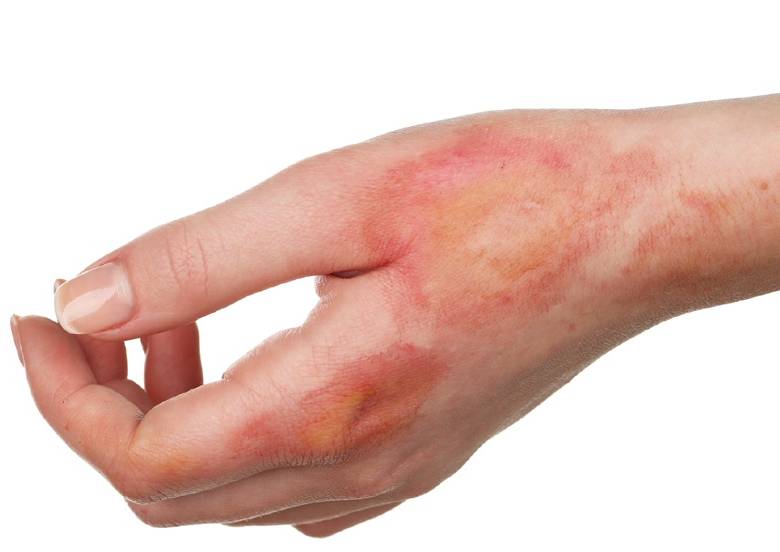
Plastic Surgery Options for Burns or Wounds
If your wound is severe, you may have to undergo debriding, which is the removal of dead tissue, prior to reconstructive surgery.
Once that is done, there are several types of wound treatments your plastic surgeon may suggest:
Skin grafts. This is often used for burn patients; skin is removed from one area of the body and transplanted to another. There are two types of skin graft: split-thickness grafts in which just a few layers of outer skin are transplanted and full-thickness grafts, which involve all of the dermis. There is usually permanent scarring that is noticeable.
During a skin graft, a special skin-cutting instrument known as a Dermatome removes the skin from an area (the donor site) usually hidden by clothing such as the buttocks or inner thigh. Once removed, the graft is placed on the area in need of covering and held in place by a dressing and a few stitches. The donor site is also covered with a dressing to prevent infection from occurring. Recovery time from a split-thickness skin graft is generally fairly rapid, often less than three weeks. For full-thickness skin graft patients the recovery time is a few weeks longer. Aside from burn patients, skin grafts can also be used during breast or nose reconstruction, and for extensive areas of trauma, extensive skin loss due to infection, and removal of large skin cancers.
Microsurgery. Have you lost a finger, toe, ear, or even a lip? Microsurgery may allow for those to be re-attached. Simply stated, it is a procedure in which the surgeon uses a microscope for surgical assistance in reconstructive procedures. By using a microscope, the surgeon can actually sew tiny blood vessels or nerves, allowing him or her to repair damaged nerves and arteries. This may also be a method to relieve facial paralysis or reconstruct breasts. Microsurgery is frequently used with other surgical procedures such as the free flap procedure.
Free flap procedure. A free flap procedure is often performed during breast reconstruction or following surgery to remove head or neck cancer. During the procedure, muscle, skin, or bone is transferred along with the original blood supply from one area of the body (donor site) to the surgical site in order to reconstruct the area. The procedure often involves the use of microsurgery. Healing of the surgical site can be slow and require frequent wound care. Total recovery may take six to eight weeks or longer.
Tissue expansion. Tissue expansion is a medical procedure that enables your body to “grow” extra skin for use in reconstructive procedures. This is accomplished by inserting an instrument known as a “balloon expander” under the skin near the area in need of repair. Over time, this balloon will be gradually filled with saline solution (salt water), slowly causing the skin to stretch and grow, much the same way a woman’s skin stretches during pregnancy. Once enough extra skin has been grown, it is then used to correct or reconstruct a damaged body part. This procedure is especially common for breast reconstruction.
Tissue expansion has many advantages in that the skin color and texture are a near perfect match for the area in which it is needed and there is little scarring since there is no removal of skin from one area to another. The major drawback to tissue expansion is the length of the procedure, which can be as long as four months. During this period, as the balloon expander grows, the bulge under the skin grows with it. This bulge may be desirable for a breast reconstruction patient; however, for patients undergoing this procedure for scalp repair, the bulge may be uncomfortably noticeable.
Questions? We got Answers!
Surgery will not be able to remove a patient’s burn scars entirely, but it will help improve basic functions and make scars less noticeable. Scarring can limit the normal motion of the neck, shoulder, hands, or legs. Often surgery to help release this contracture can help a patient regain range of motion. Facial scarring that leads to problems with the eyelids, lips, nose, or hair loss can also be helped with reconstructive burn surgery. Scars that are abnormally thick, wide, or discolored might also be improved by a variety of operative and non-operative methods.
Non-operative therapies might involve scar massage, application of pressure garments, or other topical therapies. Occupational therapist can help fit patients with pressure garments. The team includes specialty hand therapists who help with rehabilitation of hand burns and scars. Surgical options consist mainly of scar release procedures. The tight scar tissue is released and the open area closed by a plastic surgeon. There are a variety of ways to close these wounds depending on a patient’s needs. Skin grafts, skin rearrangement (sometimes called Z-plasty), and more complex skin donor flaps could be used, depending on the location of the scar and a patient’s personal goals. Most minor procedures are performed as outpatient surgery, but the larger grafts and flaps would likely require an inpatient stay. Tissue expansion can also be used as an alternative to skin grafting. Excellent results are commonly attained when performing tissue expansion to regions of the face, neck, arms, hands, and legs.
For any surgery involving the removal and transplantation of skin, it is extremely important that you follow the general instructions and guidelines for the care of your wound once you are sent home.


